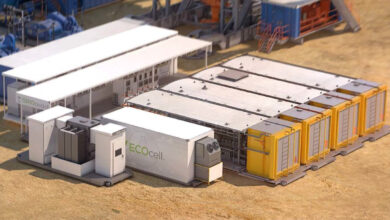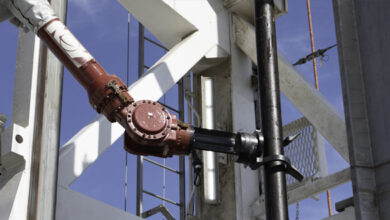In Brazil, it’s two steps forward, one step back
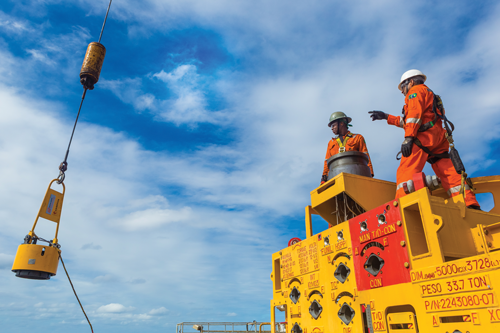
Even as progress is made in opening the presalt and reducing local content requirements, new corruption charges embroil the president, threatening to slow ongoing reforms related to taxes, environmental licensing
By Linda Hsieh, Managing Editor
- Rig count in Brazil continues to fall as Petrobras downsizes its contracted fleet. However, projects being planned by IOCs such as Total and Statoil may provide a boost in the near future.
- Delays in environmental licensing remain a significant hurdle. A bill has been proposed that calls for a maximum of 10 months for environmental licenses to be issued.
- Long-term outlook for Brazil remains bright, mainly due to impressive production rates proven by existing presalt wells.
The near-term outlook for the Brazilian drilling market is bleak. As of August, there were only 29 offshore drilling rigs contracted to Petrobras – currently still the only operator with active offshore rigs in the country. That number compares with 36 offshore rigs last year, 52 in 2015 and 67 in 2014, said Liz Tysall, Senior Offshore Rig Analyst for consulting firm Rystad Energy.
Two of those 29 rigs are expected to roll off contract later this year, with an additional 16 rigs coming off contracts in 2018 and four in 2019. “By 2019, 22 rigs have contracts that either have expired or will expire out of the 29 rigs that are currently contracted to Petrobras,” Ms Tysall said. “Until Petrobras renews some or all of these contracts, rig activity offshore Brazil will continue to look anemic.” These numbers assume that none of the Sete Brazil newbuilds will enter the market before 2020.

In the near term, Brazil’s political outlook is also grim. President Michel Temer – who just took office last year after former President Dilma Rouseff was ousted – has been mired in his own corruption allegations. “He’s in a delicate situation,” said Sergio Fausto, Executive Director of the Fernando Henrique Cardoso Foundation, a Brazilian presidential library and think tank. Even though Brazilian lawmakers voted on 2 August to keep him from standing trial, more charges are expected to be brought against him. “Other accusations are in the pipeline. This was just the first one,” Mr Fausto said.
Amid the ongoing political drama, however, there is one bright spot: There are indications that a much-needed economic recovery is under way for the country. First and foremost, inflation has been reduced from around 10% to 3.5% over the past year and a half, Mr Fausto said. “That allowed the Central Bank to cut interest rates aggressively, and this has already translated into more confidence on the part of consumers and businesses.” Further, industrial production across all industries has been trending upward over the past few months, he added.
Mr Fausto credited President Temer’s economic team – including Finance Minister Henrique Meirelles and Central Bank Governor Ilan Goldfajn – with much of the progress that has been made over the past year. In fact, “the economic team is now the anchor of stability in Brazil,” he said.
Under the current president and his team, Brazil has already started a transition from the nationalistic policies of the past decade to a more business-friendly approach. In the context of the oil and gas industry, the most important signs of change have been the opening up of pre-salt resources to foreign operators and the lowering of local content requirements. These moves have been widely welcomed by the oil and gas industry.
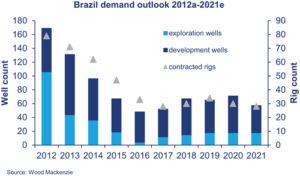
However, whether these reforms will stick remains to be seen. “We have a crucial event on the horizon, which is the presidential election next year,” Mr Fausto said. “If we are, as a society, wise enough to elect a centrist candidate committed to the reform agenda just initiated during the Temer administration, I think things will look up for Brazil and we can resume our growth trajectory.”
Petrobras on the mend
Another widely welcomed move under President Temer has been the appointment of a new CEO for Petrobras. Pedro Parente, who has an engineering background, is highly respected and known for being an effective CEO, Mr Fausto said. “I think there is a pretty positive view with regards to the future prospect of Petrobras. It is being restructured in a very consistent way. It will be a smaller company than it was in the past, but it will be more efficient and less vulnerable to corruption.”
Removing the company’s obligation to be the sole operator and to hold a minimum 30% share of any presalt projects will also boost its recovery process. “Petrobras was overburdened with responsibilities and without the necessary revenue to face those burdens that were imposed on the company,” he said.

A smaller and leaner Petrobras will likely mean a lower rig count, however. Over the past year, Petrobras has already reduced its working rig count by 10. “Around six of those 10 were actually early terminated by Petrobras,” said Leslie Cook, Principal Analyst in Upstream Supply Chain for Wood Mackenzie. When the contracts were signed years prior, the operator had been able to build into them a higher level of flexibility. This has allowed the company to terminate several contracts during this downturn simply for operator convenience. “In 2015 and 2016, Petrobras was probably the single operator with the majority of early terminations,” Ms Cook said.
However, even with the reduction of these 10 rigs over the past year, she estimates that Petrobras is still oversupplied by an additional six to 10 units. “They still have about 10 rigs that aren’t accounted for. They’re under contract, but they’re not drilling wells,” she said, adding that Petrobras will likely continue to downsize its fleet strictly to the presalt.
Diversity of operators
With Petrobras likely to remain conservative in the sanctioning of new projects over the next few years, the Brazilian drilling market may have to rely on international oil companies (IOCs) to drive incremental rig demand. Ms Cook noted that Total and Statoil have the most imminent plans to spud new wells, but others like BP, ExxonMobil and Premier Oil are also looking to drill. “Those are all on the radar for the near term,” she said. “We could see Petrobras drop another six or so rigs over the next year, but then we could see another five or six enter the region over the next year or two to offset that.”

While Statoil’s prospect is in the presalt – the Guanxuma well on block BM-S-8 in the Santos Basin – much of the near-term interest is in what’s known as the equatorial margin. This area, which is situated on the northeast coast of Brazil, includes the Foz do Amazonas, Pará-Maranhão, Barreirinhas, Ceará and Potiguar basins. “In 2016 there were no wells drilled in these areas,” Ms Cook said. “Operators who obtained licenses in these areas in the 2013 license round have not been able to secure the needed environmental approvals to start exploration as of yet.”
Indeed, environmental licensing remains one of the biggest barriers for E&P companies seeking to drill in Brazil. “Total has been waiting for years to get a license to drill in Foz do Amazonas,” said Kjetil Solbraekke, Senior Vice President South America at Rystad Energy. Total had planned to spud the Tucano well in Q3, then pushed it to Q4 due to the delay in obtaining the required license from IBAMA, the Brazilian environmental agency.
“The main problem for the industry is you basically don’t have any outcome on discussions with IBAMA,” Mr Solbraekke said. “If we knew what exactly was the issue, we can analyze it and see how much it will cost to deal with it. But when you don’t really have any insight into what’s driving this delay, you cannot do anything.”
A bill has been proposed that calls for a maximum period of 10 months for environmental licenses to be issued. For applications for preliminary licenses where environmental impact studies (EIAs) are required, the time line for approval would be 10 months. For applications that do not require EIAs, the time line for approval would be set at six months. Installation and operation licenses would be required to be handled in four months. Approval of this proposed bill remains to be seen, however.

Another key issue that could keep foreign operators from investing in Brazil is related to taxes. REPETRO, which provides tax breaks for imported oil and gas equipment, “needs desperate renewal,” Mr Solbraekke said. “Everybody’s been talking about it, and it seems like it’s coming, but it’s still not published.” The success of upcoming bid rounds, he asserted, will depend on confirmation of REPETRO’s extension.
“I think people are even afraid there will be minor adjustments to it because that could mean the system is starting to crumble a bit.” As of late July, extension of REPETRO was still awaiting presidential sanction. If and when that approval will be confirmed is uncertain, however, due to the political pressures that President Temer is facing. Editor’s Note: On 18 August, the Brazilian federal government issued a decree to extend Repetro to 31 December 2040.
New taxes being imposed by the state of Rio de Janeiro is another hurdle that the industry is working to eliminate, said Shiniti Ohara, Vice President of Operations at Barra Energia, a Brazil-based independent E&P company. An injunction against these taxes has been instated, although the final decision still rests with the Brazilian Supreme Court, which had not announced its decision as of early August. “Operators need a stable tax regime,” Mr Ohara said. “They’re going to develop fields that will produce for 20 or 30 years. They need stability so they can plan.”

Barra holds 10% interest in block BM-S-8, operated by Statoil. The block contains the giant Carcará presalt discovery, made by Petrobras in 2012 before it sold its stakes to Statoil. “We have already drilled three wells on this block,” Mr Ohara said. “The oil quality is very good – 31° API, and there are no contaminants such as H2S and CO2.”
The Carcará unitization area is scheduled to be auctioned off in the October 2017 bid round, under a production-sharing regime. This sale is required for Barra and its partners to proceed with developing Carcará resources in BM-S-8. “We will need to undergo a unitization process with whoever acquires this area. We would need to drill two or three more wells, then decide how to produce the entire reservoir,” Mr Ohara said. “I think it will be at least three to four more years before starting development and first oil.”
The only other block in which Barra holds interest is BS-4 in the Santos Basin. The current prospect is the post-salt Atlanta field, located in water depths of approximately 5,000 ft. Barra holds 30% interest, while operator Queiroz Galvão (QGEP) holds another 30% and OGX holds 40%.

Two horizontal wells have been drilled on Atlanta so far, with a third planned for 2018. “Now we are waiting for the FPSO to arrive. It’s already been a two-year delay on this arrival,” Mr Ohara said. Teekay Offshore Partners’ Petrojarl I FPSO, which required retrofitting in order to handle the field’s heavy oil, is now expected to arrive in January 2018. First oil is expected soon thereafter.
From the first two wells that have already been drilled, the early production system will be hooked up, likely with a production level of 20,000 to 30,000 bbl/day. “We are going to start with the two wells and see how the reservoir behaves. Then we will go to full field development, which should be another 10 wells,” Mr Ohara explained. Such an expansion would require a larger FPSO, however, so the consortium will likely keep the field small for at least the next three to five years.
Looking at technical requirements to develop Brazil’s presalt fields, Mr Ohara said the industry must continue to improve the reliability of managed pressure drilling (MPD) equipment. “MPD is paramount. It’s almost a must to drill the presalt wells,” he said. The first well that was drilled on Carcará was drilled without MPD, he said, and “we lost almost 30,000 barrels of oil-based mud.” The well also took nearly a full year to drill, costing more than $300 million.
The consortium decided that an MPD-enabled rig would be required for the following well. “The second well we drilled with MPD, and we spent almost a third of the time and money to drill this well. It was a huge lesson learned,” Mr Ohara said.

Besides MPD, operators in Brazil are also looking to standardization to improve the cost efficiency of presalt projects. Vallourec, for example, has been working with Petrobras on standardizing its OCTG supply. “We are working with operators to understand their pain points, looking not only at the supply of tubes but the whole supply chain. We need to reduce their total cost of ownership,” Renato Renno, General Manager of Vallourec’s OCTG Business Unit, said.
Vallourec is also continuing its R&D efforts to meet operators’ demands for higher makeup torques, higher pressure ratings and slimmer drill pipe configurations. “On the completion and landing side, they are looking for higher tensile ratings on the tubulars they use for casing installations,” said Hector Arevalo, Vallourec VP of Sales and Marketing in the Americas. “There are also discussions on the type of materials that we need to have on these tubulars. We’re no longer talking about conventional steels but high-strength steel or steel designed to operate in H2S or CO2 environments.”
Earlier this year, Vallourec launched the Open Brasil program, which will select Brazilian technology-based startup companies and individual entrepreneurs to develop projects in partnership with Vallourec. The program is focused on advancing innovations in data science. “We want to develop initiatives that will reduce costs for the operators, not only with OCTG but also with our drilling products,” Mr Renno said. “We need innovators who can think differently than what’s been done so far.”
Future outlook
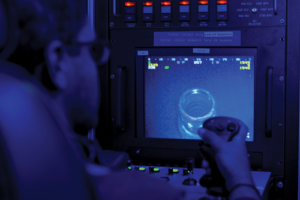
Although the near-term outlook for Brazil is gloomy, there is significant optimism when it comes to the country’s long-term future, particularly for its oil and gas sector. “Brazil is actually an area that we would foresee being able to weather some of this lower-for-longer oil prices,” Ms Cook from Wood Mackenzie said, adding that exploration success rates in Brazil are higher than the global average for deepwater. Mr Fausto with the Brazilian think tank also believes that the oil and gas sector will be “one of the engines in the Brazilian economy for the foreseeable future.”
Much of this optimism is based on Brazil’s world-class presalt resources. “The presalt in Brazil is the most fantastic story,” Mr Solbraekke said. Production figures show that there has been 1.5 million barrels produced from only 75 presalt wells, for an impressive average of 20,000 barrels per well. “I don’t think any other areas in the world really has any production like that,” he noted.
Some of the wells in that group of 75 are even test wells that have been choked back. “So even choking some of the wells back, with a magnitude of 75 wells, they’re producing an average of 20,000 barrels. Some of the best wells are producing above 40,000 barrels a day. This kind of productivity is unheard of. At least, it’s four to five times better than what you would see in other parts of the world,” he said.
This year, Rystad Energy estimates that Brazil will produce approximately 1.5 million barrels per day of oil and gas in total, with nearly half of it coming from the presalt. By 2020, Brazilian production is forecasted to increase to approximately 3.8 million barrels of oil and gas per day, with presalt accounting for approximately two-thirds of the total.
“Everybody talks about shale,” Mr Solbraekke said. “But I think presalt is better than shale.” The advantage to North American shales is that it’s located in an innovative and business-friendly environment. “So that out-competes the presalt today. I think if the Brazilians get the regulations right, it will compete with anything.” DC
DC Editorial Coordinator Eva Vigh contributed to this article.





